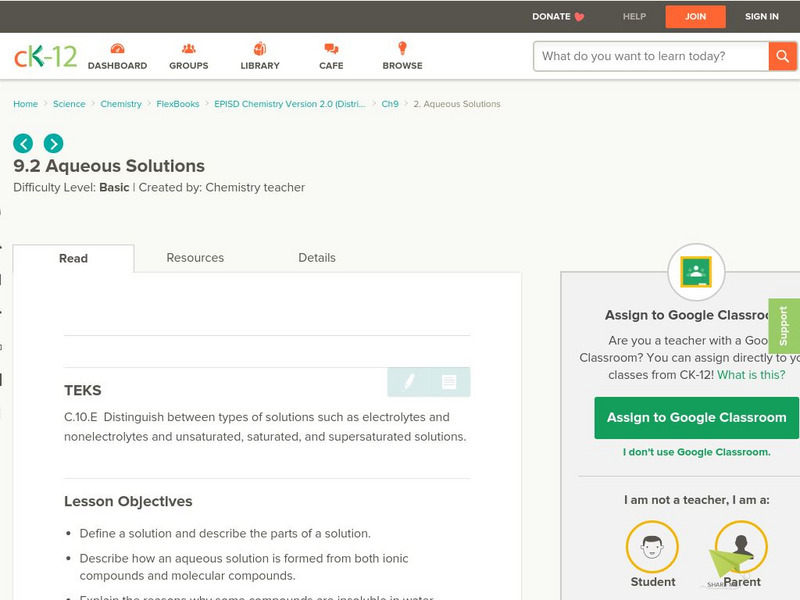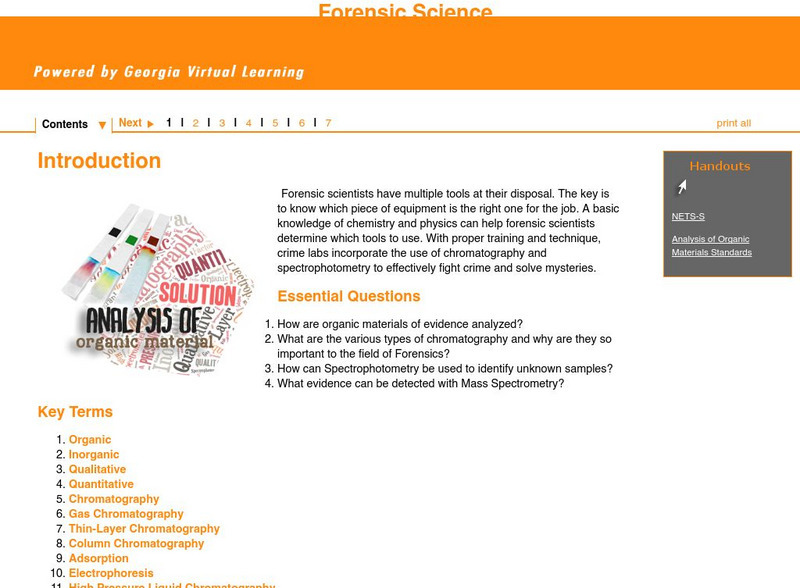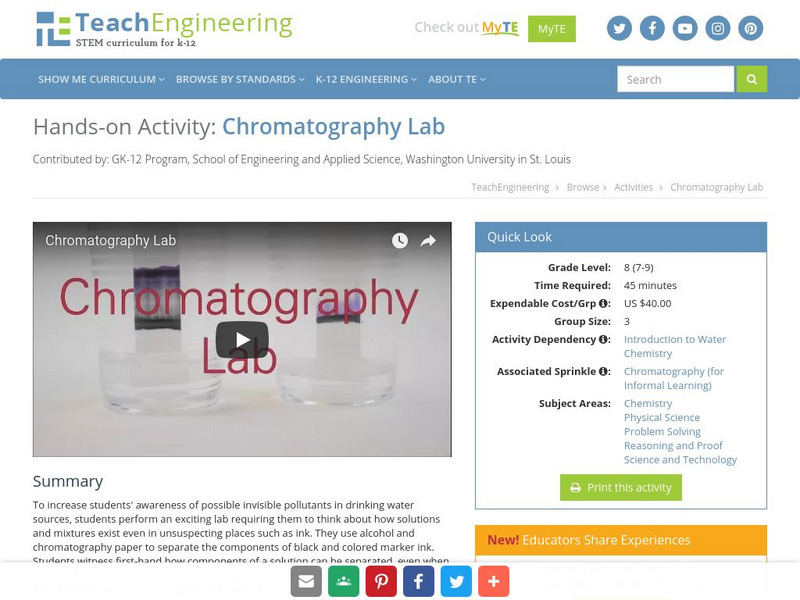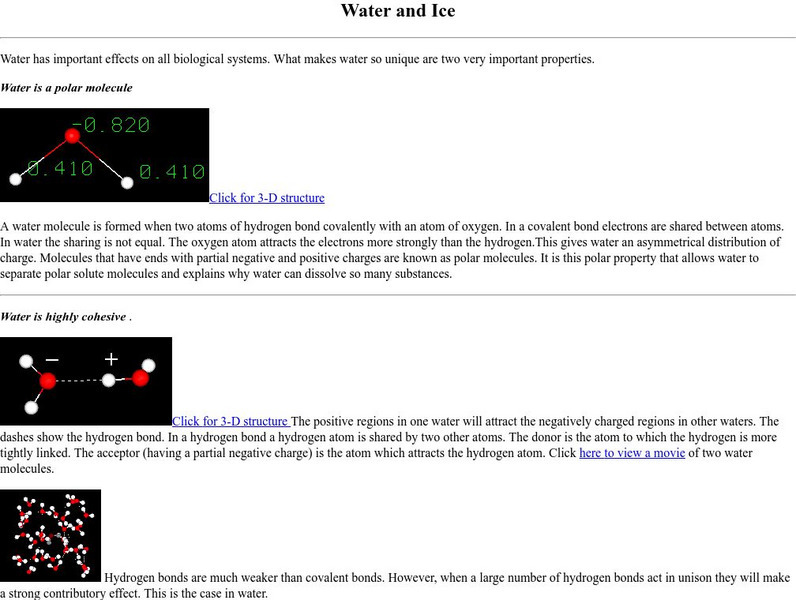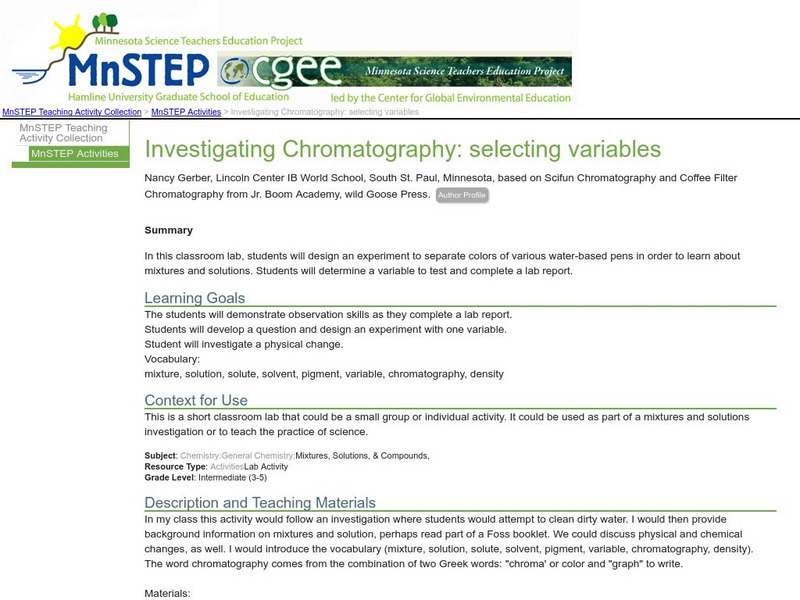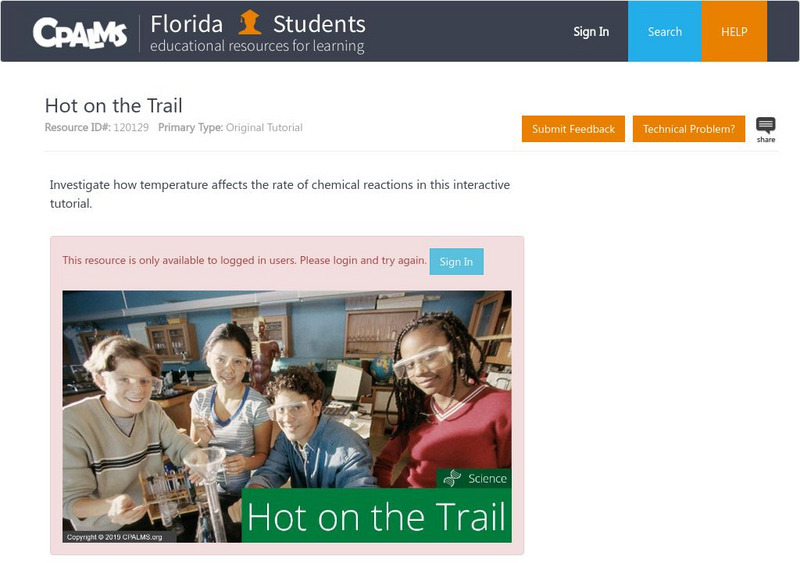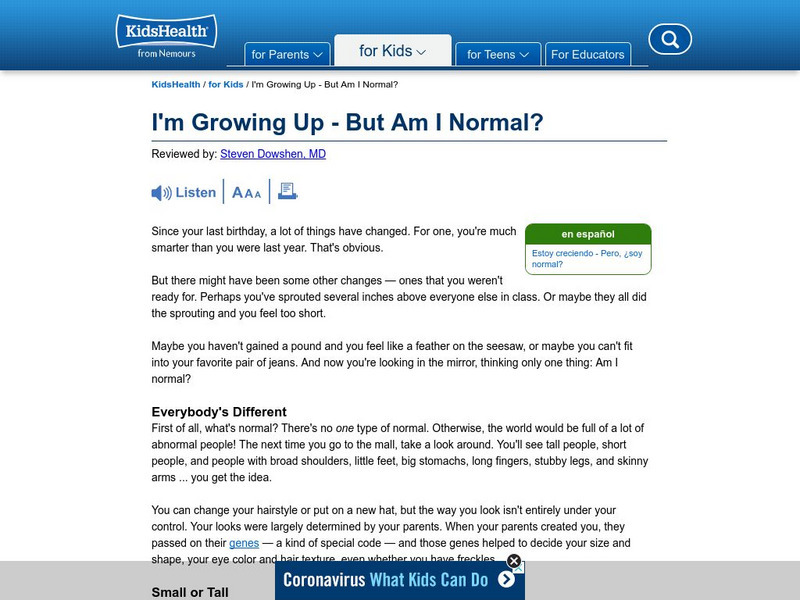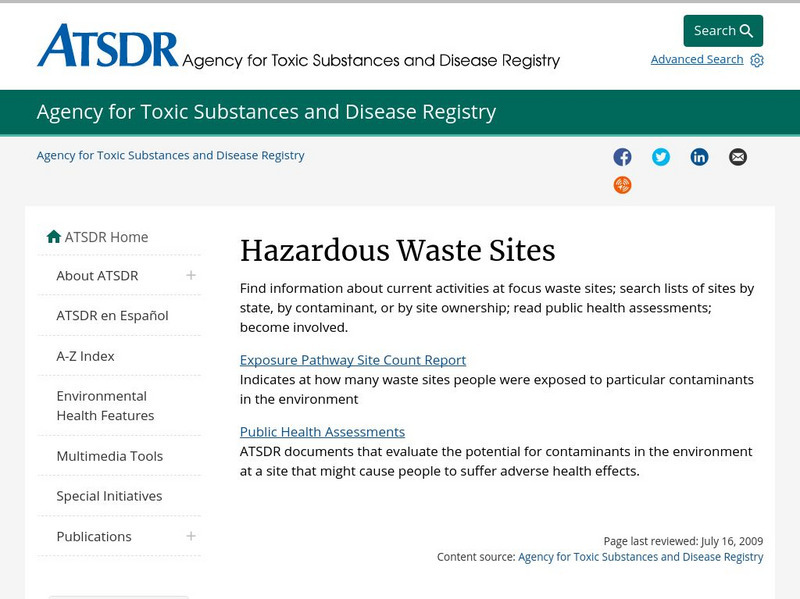John Wiley & Sons
Concepts in Biochemistry: Concept Reviews: Water, P H, and Non Covalent Bonding
A detailed review of water and its structure. Included are diagrams, animated graphics, and review quizzes. For the advanced high school student.
CK-12 Foundation
Ck 12: Aqueous Solutions
[Free Registration/Login may be required to access all resource tools.] In the following online tutorial students will define a solution and describe the parts of a solution. They will describe how an aqueous solution is formed from both...
Georgia Department of Education
Ga Virtual Learning: Analysis of Organic Materials Analysis of Organic Materialsv
This comprehensive interactive tutorial continues to explore the forensic science field. Learn how organic materials of evidence are analyzed and what the various types of chromatography are, especially why they are so important to this...
TeachEngineering
Teach Engineering: Chromatography Lab
To increase students' awareness of possible invisible pollutants in drinking water sources, students perform an exciting lab requiring them to think about how solutions and mixtures exist even in unsuspecting places such as ink. They use...
Annenberg Foundation
Annenberg Learner: Virtual Particle Lab: Dissolving
Explore what happens when one substance dissolves into another. Run the simulations and see if you can predict the results.
Frostburg State University
Why Does the Solubility of Gases Usually Increase as Temperature Goes Down?
This chemistry course article, "Why does the solubility of gases usually increase as temperature goes down?," provides text and related links on the effects of temperature and pressure on the solubility of gases.
American Chemical Society
Inquiry in Action: Dissolving Different Liquids in Water
This activity will have students experimenting with whether all liquids dissolve in water. Activity includes both teacher and student instructions.
Dartmouth College
Dartmouth College: Chem Lab: Vacuum Filtration
Vacuum filtration is a technique for separating a solid product from a solvent or liquid reaction mixture. This comprehensive site addresses setting up and performing vacuum filtration.
Khan Academy
Khan Academy: Molarity vs. Molality
Learn how molarity and molality differ. The molality of a solution is equal to the moles of solute divided by the mass of solvent in kilograms, while the molarity of a solution is equal to the moles of solute divided by the volume of...
Science Buddies
Science Buddies: What Makes Ice Melt Fastest?
If you live in a place that gets cold in the winter, you have most likely seen trucks spreading a mixture of sand and salt on the streets after a snowfall to help de-ice roads. This basic chemistry project gives you clues to discover how...
US Geological Survey
Water Properties
This site provides a discussion of the physical properties of water. Click Home to access the site in Spanish.
New York University
New York University: About Water and Ice
Page uses movies and 3D images to explain how properties of water relate to polarity and hydrogen bonding.
Science Education Resource Center at Carleton College
Serc: Investigating Chromatography: Selecting Variables
For this lab, students will demonstrate observation skills as they design an experiment to separate colors of various water-based pens in order to learn about mixtures and solutions. Students will determine a variable to test and...
Estrella Mountain Community College
Online Biology Book: Chemistry Ii: Water and Organic Molecules
Online biology textbook discussing the chemical nature of water, and the importance of its molecular structure to life. Also discusses at length the organic molecules nucleic acids, proteins, lipids, and carbohydrates.
Crescent Public Schools
The Internet Science Room: Solution Concentration
Students have the opportunity to study examples and worked out example problems to further their understanding of chemical solution concentration.
Other
Reverse Osmosis and Osmotic Pressure What They Are
This site gives a good explanation of osmosis and reverse osmosis. Also includes a scientific diagram of the process.
McGraw Hill
Glencoe Biology: Water and Solutions: Self Check Quiz
Answer five multiple choice questions about water and solutions in this self-checking quiz.
Concord Consortium
Concord Consortium: Molecular Workbench: Water and Polar Substances
Adjust amounts of ionic charges in this simulation to see how water molecules react to polar substances in solution.
Chem4kids
Chem4 Kids: Making Solutions
What makes up a solution? Are there variables to consider when mixing a solution? Find out with this overview.
CPALMS
Florida State University Cpalms: Florida Students: Hot on the Trail
Learn what affect changing temperature has in regards to chemical reactions.
Curated OER
Kids Health: I'm Growing Up but Am I Normal?
Witnessing changes that take place on your body can sometimes be a confusing experience. Are the changes normal? Are you changing in ways unlike anyone else? This site may help to relieve some worries that an adolescent may be pondering....
Other
Bromine Science and Environmental Forum: Bromine
A site that is devoted to furthering the study and use of bromine products in commercial applications. Includes information on fire safety and fire retardant products, and a bibliography.
CK-12 Foundation
Ck 12: Chemistry: Dissolving Process
[Free Registration/Login may be required to access all resource tools.] Describes solution formation and interaction of solute with water.
Centers for Disease Control and Prevention
Centers for Disease Control: Atsdr: Superfund Hazardous Waste Sites
Extremely detailed look at the dangers associated with the hazardous and solid waste sites in the U.S.
Other popular searches
- Solutions Solvent Solute
- Solute Solvent
- Solvent and Solute
- Water Universal Solvent
- Solute and Solvents
- Solute and Solvent Lab
- Organic Solvents
- Solution, Solvent, Solute
- Solvent vs Solute
- Solutes and Solvents
- Universal Solvent
- Water Universal Solvent



